
Depending on geographical location, certain types of needles for body piercing procedures are illegal. Inexperienced or unprofessional piercers use sewing needles or piercing guns to pierce body parts not realizing the dangers of that practice. Sewing needles and piercing guns cause unnecessary trauma and the possibility of bacteria and disease transmission, as guns and inappropriate needles are not sterile and the piercing hole is normally a tear or rip instead of an appropriate puncture wound. In the United States, hollow, curved and cannula needles are the only needles legal for use by professional piercers.
Hollow Needle
The most common type of body piercing needle, a hollow needle features a triangular tip. It comes in different gauges--as small as 18 gauge and as large as four gauge--and lengths--anywhere from 1 1/2 inches to 3 inches. Hollow needles are cut with lasers to ensure sharpness. Jewelry, of the same size as the needle, follows the needle into the piercing hole for insertion. Piercing with a larger gauge needle than the jewelry is not recommended, as unnecessary bleeding and scar tissue can occur. Inexperienced piercers may use a larger gauge needle for fear of "losing connection" and the jewelry attaches inside the needle to prevent this from happening. If the jewelry is not inserted in a single, fluid, quick manner, the new piercing hole may shrink or close immediately and the piercer will have to repeat the piercing to complete the procedure.
Cannula Needle
A cannula, or catheter, needle is encased in removable plastic tubing. The cannula makes the piercing hole like other piercing needles, but the plastic tubing remains in the piercing hole. After removing the needle from the tubing, the piercer uses sterile scissors to cut away the hub section of the tubing. The piercer then inserts jewelry into the plastic tubing and pulls it through the piercing.
Curved Needle
Curved needles are rarely used to perform piercing procedures. Similar to a circle shape, curved needles are used for a tragus and other piercings in the ear. The curved needle prevents the needle from puncturing the other side of the ear during the piercing. Newly graduated piercers or those in an apprenticeship may use curved needles while learning and adjusting to the pressure, depth and speed necessary for intricate ear piercings.
Dermal Punch
A dermal punch is a round medical device used by dermatologists when performing biopsies of the skin. Large gauge piercings, such as two or zero gauge, are performed with a dermal punch. Excessive bleeding is normal during this procedure and only experienced piercers with an educational background in anatomy should perform a dermal punch procedure, as the piercer needs to be aware of blood vessel placement. Dermal punches are considered a medical tool in some geographical areas and are illegal for body piercers to use. A piercer who performs dermal punches in an area that prohibits the procedure could be charged with practicing medicine without a medical license.
Related Articles
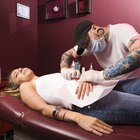
The Scale of Pain for Piercings

What Is Bio-Flex Made of for Piercings?
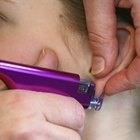
What Size Gauge Is an Ear Piercing Gun?
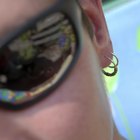
Places to Pierce Your Ear
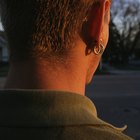
How to Gauge the Ears Right After the ...

How to Remove a Labret Piercing
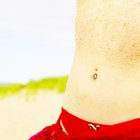
How to Figure Out the Size of Your ...
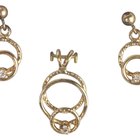
How Long After Piercing Can You Change ...

Harmful Effects of Wearing Magnetic ...

How Do They Pierce Your Ears With ...

How to Repair Ear Gauges
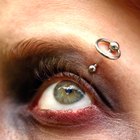
Different Body Piercings for Women
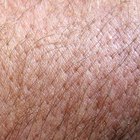
How to Shave Skin Moles

How to Pierce Your Navel
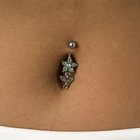
How Do I Change a Belly Button Ring for ...

Taking Care of Gauged Ears
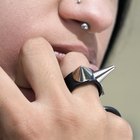
Information on Nose Piercings
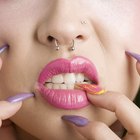
How to Put in a Hoop Nose Ring
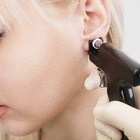
What If They Make a Mistake When ...

Facts on Nose Piercings
References
Writer Bio
Maude Coffey retired after 10 years working as a professional body modification artist in the tattoo industry. She is certified in principles of infection control and blood-borne pathogens. Coffey received additional training and classes, such as anatomy, jewelry standards and aftercare, from the Association of Professional Piercers. Coffey aims to educate about safe tattooing and piercing practices while writing for various websites.
Photo Credits
needle image by Zbigniew Nowak from Fotolia.com